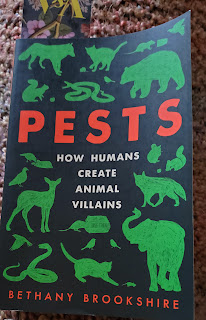NATURE MONCTON NATURE NEWS
August 13, 2024
Nature Moncton members, as well as any naturalist
in New Brunswick or beyond, are invited to share their photos and descriptions
of recent nature sightings to build a fresh (almost) daily edition of Nature
News
To respond by e-mail, please address your message
to the information line editor, nelsonpoirier435@gmail.com
.
Please advise both the editor at nelsonpoirier435@gmail.com
and the proofreader nicholsl@eastlink.ca
if any errors are noted in wording or photo labelling.
For more information on Nature Moncton, check the website at www.naturemoncton.com
.
Proofreading
courtesy of Louise Nichols at nicholsl@eastlink.ca
**It will
leave a sad feeling with many of us having to say goodbye to two people who have
served faithfully as part of the Nature Moncton community over many years.
Both Bob
Childs and Aerolynn Greene have passed away in the past week. They are leaving
many pleasant memories of their time as active members of Nature Moncton.
The
obituary for Bob is at Robert Childs
(cobbsfuneralhome.ca)
and
obituary for Aerolynn is at https://www.cobbsfuneralhome.ca/obituaries/179458
**This
Wednesday evening’s Nature Moncton walk write-up is below and the weather is
looking great.
Location: Water Retention Ponds (Sackville)
Start time: 6:00 pm
Host: Louise Nichols
Starting Location: Parking available along the side of St. James St. in
Sackville. Driving the Trans Canada, take Sackville exit #504. Go
through the lights and continue along Main St. (Rte 940) as it veers to the
left. You will reach a 2nd set of lights at the intersection of Main and
Bridge St. Turn left onto Bridge St. Turn right on the next street
(Lorne St). Turn left on St. James St.
The Sackville Retention Ponds were created in the heart of Sackville to divert
rainwater through a series of ponds connected by culverts and ditches out to
the Tantramar River. Not only does the system provide flood protection to
the town, but it is also a potentially significant area for waterfowl,
shorebirds, and other bird and insect life. The ponds are surrounded by
easy walkable trails, so this walk is classified as an easy walk of
approximately two to three km. In mid-August, we should see some ducks
and shorebirds, but familiarity with the site is also worthwhile because
shorebird activity may pick up as fall approaches and people may wish to
return. In past years, many species of shorebird have been present,
including the uncommon Stilt Sandpiper and Hudsonian Godwit.
Bug spray and protective clothing are recommended. Don’t forget to wear your
name tag too!
All are welcome, Nature Moncton members or not.
**It’s that
time of year when the caterpillar community is being noted in greater numbers.
Maureen
Girvan got an excellent photograph of the Definite
Tussock Moth (Orgyia definita). Maureen’s photo nicely shows the
identification features of a yellowish head capsule, and body surface fully
yellow with thin clusters of black slender setae on the head and rear typical of
the tussock moth caterpillar group. The four dense hair clusters (verrucae) on the
dorsal body also show well.
Like many
tussock moths, the hairs (setae) can cause a rash if in contact with human
skin.
**Aldo
Dorio got a photo of a Short-billed Dowitcher still showing some
breeding remnants at Wishart Point on Monday.
**Christine
Lever comments she is currently reading a book called Pests: How Humans Create Animal Villains written by Bethany Brookshire that is giving her food
for thought. Wolves, bears, foxes, gophers, beavers, many birds, insects, and bats
are easily labeled pests to be eradicated. We colonize their habitat and label
them pests.
(Editor’s
note: There is little doubt that some species humans have introduced that are
non-native have become problematic. Over the years, many of our native species
are no longer considered pests. A ‘hot button’ issue that could lead to diverse
opinions!)
** On late
Sunday night (and very early Monday morning) Brian Stone and several family
members planted themselves in his sister's backyard for a few hours to view and
count meteors from the Perseid meteor shower. Due to intermittent clouds and
seemingly lower numbers than usual, they didn't see as many meteors as
sometimes in previous occurrences of this shower. Brian still did manage to see
36 meteors over the few hours of viewing time and several of those were quite
bright and impressive.
An added
bonus to the evening (and following early morning) was the appearance of a very
large and bright episode of the Aurora. Brian took some cell phone
photos and sends some of the best ones to share. Also seen were the planets Jupiter
and Mars in close conjunction near the interesting and famous Pleiades
star cluster.
**Nelson Poirier
photographed the sharply dressed Two-striped Grasshopper on the
Escuminac Beach on July 28.
This common
grasshopper is an easy one to identify by noting the pale-yellow stripes
running along the top of its body from above its eyes to the hind tip of its
wings. The brilliant red inner hind femur and tibia are another clue.
Nature
Moncton

.JPG)
.JPG)
.JPG)
.JPG)


.%20JULY%2028,%202024.%20NELSON%20POIRIER.jpg)
